How to Properly Prepare Your ATV or UTV for the Winter

No riding enthusiast wants to admit that the (optimal) season is coming to a close, but preparing your machine for winter is essential to ensuring it remains in prime condition during the colder months. Plus, this ensures it’s ready for use when spring rolls around. “Winterizing” your ATV or UTV protects it from the harsh elements which can cause mechanical problems and premature wear. Whether you store it away for the quarter or plan to ride it through snow and ice, here are the best practices to fortify your off-road rig for winter:
1. Clean Thoroughly
Before storing your vehicle for the winter, it’s best to give it a deep clean. Mud, dirt, and debris can trap moisture, leading to rust and corrosion over time, especially in cold, damp environments. Even if you’re planning to ride throughout the season, regular washes help to uncover any new or growing concerns with the machine. Here's what to focus on:
- Wash the exterior: Use a pressure washer or a hose with moderate pressure to wash off mud, dust, and grime from the body and undercarriage.
- Clean the engine and exhaust system: Use an appropriate engine degreaser to remove oil and grease buildup.
- Dry it thoroughly: After washing, let the ATV dry completely, or use compressed air to blow out water from hard-to-reach areas. Moisture left on the ATV can lead to rust.
- Apply a protective coating: This is optional, but some kind of wax can help the plastics stay in good shape while also preventing dust and the likes from building up on the vehicle.
2. Change the Oil and Filter
Changing the oil before storing your ATV is one of the most important steps in the winterization process. Old oil can become acidic and harmful to your engine when left for long periods. It’s also common for contaminants like dirt and metal shavings to accumulate in the oil over time. By changing the oil and filter, you ensure the engine stays lubricated and free from these harmful substances during winter storage. If the ATV or UTV will continue its duties, then this tip will give the most efficient distribution of oil for the engine as temps dip.
- Tip: Use oil recommended by the manufacturer for cold weather. Some owners switch to winter-grade oil that performs better in lower temperatures. For those in especially cold climates, it may be worth pursuing oil additives to ensure it retains the proper viscosity.
3. Drain or Stabilize the Fuel
Gasoline can degrade over time and gum up the fuel system, leading to poor engine performance or even damage when you start it again in the spring. There are two main options for dealing with fuel during winter storage:
- Fuel stabilizer: If you plan on storing your ATV or UTV with fuel in the tank, add a fuel stabilizer. Run the engine for a few minutes to circulate the stabilizer through the fuel system.
- Drain the fuel: Some owners prefer to drain the fuel entirely to avoid any degradation. This method ensures that no fuel can corrode or clog the carburetor, fuel injectors, or lines. However, some studies show that an empty fuel system can rot or dry out to the degree that it causes its own set of problems.
4. Battery Maintenance
Batteries are vulnerable to cold weather, and if they aren’t properly cared for, they can lose charge or even freeze. A drained battery or one in poor condition can also lead to a machine that fails to start. Follow these steps to keep your battery in good condition:
- Disconnect the battery: If you're storing your ATV and/or UTV for several months, disconnect the battery to prevent parasitic drainage from electrical systems.
- Store in a warm place: Bring the battery indoors and store it in a cool, dry place, ideally at room temperature. Extreme cold can reduce a battery’s lifespan.
- Use a trickle charger: A smart trickle charger, also known as a battery maintainer, keeps the battery charged without overcharging it. This is especially useful if you leave the battery connected to the vehicle.
5. Protect the Tires
Tires can develop flat spots if your rig is left sitting for extended periods in one spot. This isn’t as common or likely to occur to a significant degree with radial tires, but bias ply tires are especially prone to flat spots. To prevent this, follow these tire maintenance tips:
- Inflate to the recommended pressure: Cold weather can cause the air in your tires to contract, so ensure they're properly inflated before storage. Those in climates with major temperature swings may want to over-inflate the tires to avoid dropping pressure from becoming well below the recommended PSI.
- Elevate the vehicle: If possible, lift the body off the ground with a jack or use ATV stands to prevent flat spots. This also helps relieve pressure from the suspension system.
- Move the ATV/UTV periodically: If you can't elevate it, move the ATV or UTV a few inches every couple of weeks to distribute the tire pressure. Better yet, run it to get the fluids flowing and to keep bearings and components lubricated.
6. Lubricate Moving Parts
Cold temperatures can cause moving parts to become stiff and susceptible to wear. Lubricating key components of your off-road vessel before winter storage helps protect against this:
- Grease all fittings: Use the appropriate grease for your ATV/UTV to lubricate areas like the suspension, steering, and brake levers.
- Oil the chain: If your vehicle uses a chain drive, apply a chain lubricant to prevent rust and ensure smooth operation.
- Cable lubrication: Lubricate the throttle, brake, and clutch cables to prevent them from sticking or freezing.
7. Check and Protect the Coolant System
If your ATV/UTV has a liquid-cooled engine, make sure the coolant is fresh and at the proper level. Most importantly, ensure it has the correct antifreeze mixture to protect your engine from freezing temperatures.
- Replace old coolant: If the coolant hasn’t been changed in a while, it’s a good idea to flush the system and refill it with a fresh mix.
- Check for leaks: Inspect hoses and seals to ensure there are no leaks or cracks that could worsen in freezing temperatures.
8. Cover and Store Your ATV Properly
Finally, proper storage of your ATV is critical to keeping it in good shape throughout winter. Here’s how to do it right:
- Store indoors: Whenever possible, store your ATV in a garage or shed to protect it from snow, ice, and fluctuating temperatures.
- Use a quality cover: If indoor storage isn’t an option, invest in a high-quality, weatherproof cover. This will shield your ATV or UTV from moisture, dust, and UV rays that could degrade its components.
- Ventilation: Ensure the storage area is well-ventilated to prevent condensation, which can lead to rust and mold.
- Prevent rodent infestation: Use dryer sheets or peppermint oil to help deter mice and other rodents from chewing on wires and other components.
Conclusion
Winterizing your off-road vehicle involves a thorough process that covers everything from cleaning to fuel maintenance, lubrication, and storage. Taking the time to follow these steps will not only protect your vehicle from damage but also ensure that it’s ready to hit the trails as soon as the weather warms up. By caring for your ATV or UTV in the off-season, you extend its lifespan and keep it in optimal condition year-round.

Ross hosts The Off the Road Again Podcast. He has been in the off-road world since he was a kid riding in the back of his dad’s YJ Wrangler. He works in marketing by day and in his free time contributes to Hooniverse, AutoGuide, and ATV.com, and in the past has contributed to UTV Driver, ATV Rider, and Everyday Driver. Ross drives a 2018 Lexus GX460 that is an ongoing build project featured on multiple websites and the podcast and spends his free time working on and riding ATVs.
More by Ross Ballot





















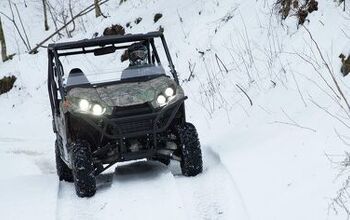


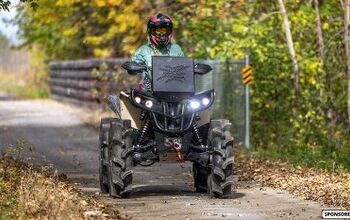

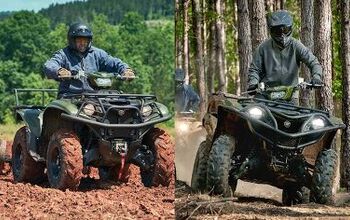
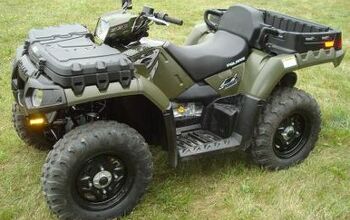

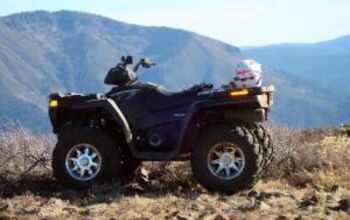

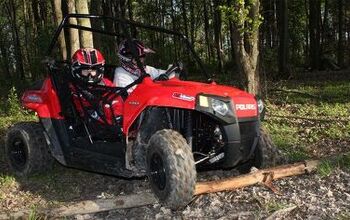



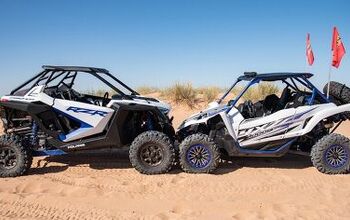
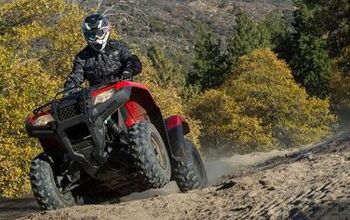
Comments
Join the conversation